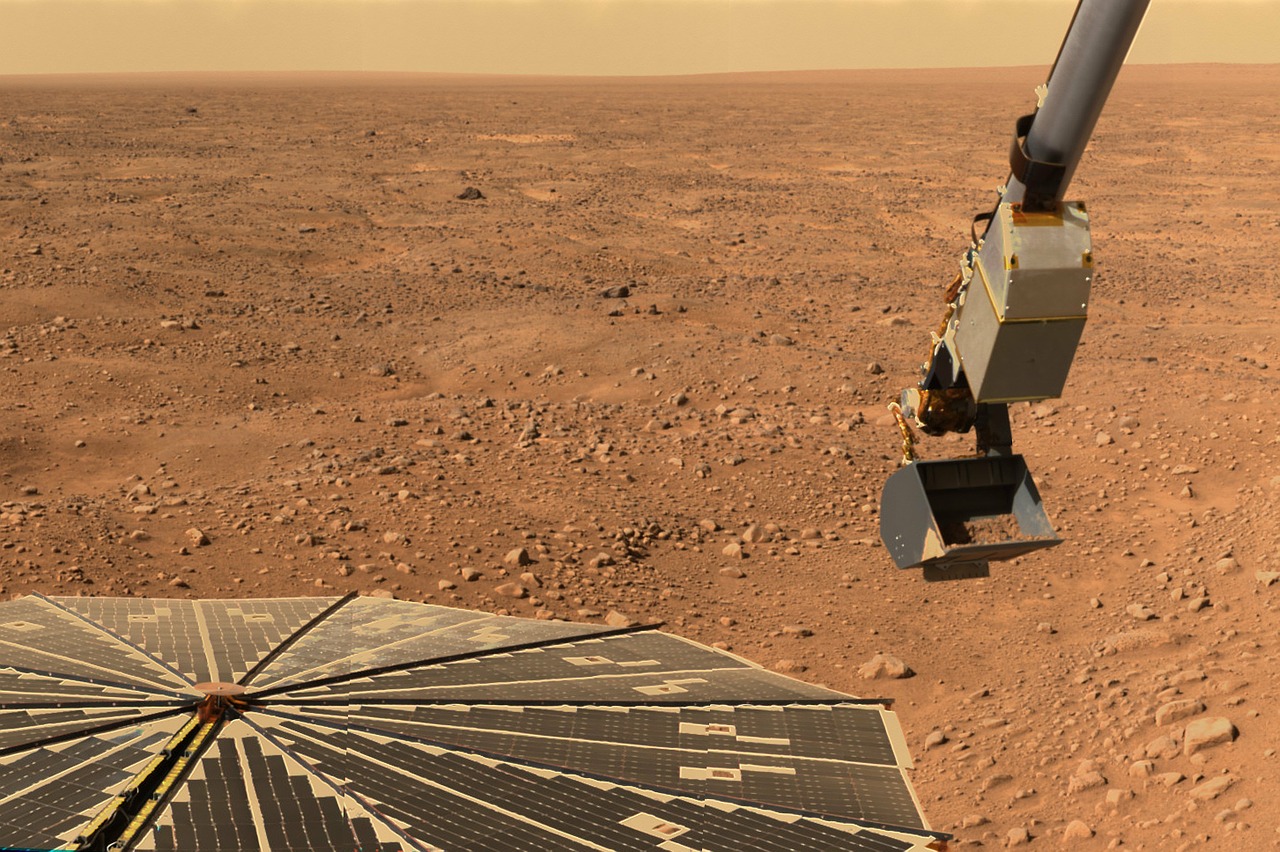Martian dust storms threaten to knock out NASA’s InSight lander
05/03/2021 / By Virgilio Marin

The National Aeronautics and Space Administration (NASA)’s InSight lander faces an energy crisis after intense Martian dust storms covered its solar panels with dust. The $800 million lander is now in emergency hibernation mode to conserve energy. If its batteries die, the spacecraft may never recover.
“We would be hopeful that we’d be able to bring it back to life, especially if it’s not asleep or dead for a long period of time,” Bruce Banerdt, a scientist at NASA’s Jet Propulsion Laboratory and InSight’s principal investigator, told Business Insider. “But that would be a dicey situation.”
Extreme weather on Mars punishes InSight lander
InSight landed on Mars in 2018 and is currently stationed at Elysium Planitia, a windswept plain that is regularly whipped by dust storms. Last November, the lander completed its original mission to map the planet’s interior and detect Martian quakes. It is currently in the middle of an extended mission, but that is now in danger of ending as InSight’s solar panels can barely generate energy.
NASA was aware that regular dust storms were frequent on the plain and expected the spacecraft’s solar panels to gradually reduce their power output. But the space agency thought that passing dust devils would have eventually shaken off much of the dust, which happened many times before with the agency’s other Mars rovers, Spirit and Opportunity.
InSight did detect several passing dust devils but none were close enough to the lander. Now, the windiest season of the Martian year had just passed, which meant any cleaning event was extremely unlikely. (Related: Landslides on Mars may be caused by melting underground ice, study suggests.)
The sunlight coming to Mars was also growing fainter as the Red Planet moved toward aphelion, the point in its orbit where it is farthest from the sun. Last February, InSight’s solar panels could only produce 27 percent of their total energy capacity. This had to be shared between InSight’s science instruments, robotic arm, radio and heaters.
“The amount of power available over the next few months will really be driven by the weather,” said JPL’s Chuck Scott, InSight’s project manager. “As part of our extended-mission planning, we developed an operations strategy to keep InSight safe through the winter so that we can resume science operations as solar intensity increases.”
NASA switches off InSight to conserve energy
Over the past several weeks, the InSight team has been carefully selecting which instruments can be switched off for the day to conserve power for the heaters. The lander’s weather sensors, for example, are offline most of the time.
Currently, InSight’s power levels are enough to take the lander through the winter. But harnessing solar power on Mars is tricky. NASA’s Spirit did not survive the Martian winter in 2010 and Opportunity was forced to shut down after a spate of dust storms darkened the sky in 2019.
But if InSight’s electronics were to survive the extreme cold, the lander could reboot itself once the sun came out again. The challenge was keeping InSight warm in the meantime.
“The problem with that scenario is that in the meantime, the spacecraft is very, very cold. And this is happening during the coldest part of the year for the spacecraft,” Banerdt said. “A lot of the electronics is pretty delicate. And unfortunately, it’s pretty likely that something would be damaged by the cold.”
Banerdt suspected that Spirit and Opportunity shut down because of that. Both ran out of energy and were unable to reboot, he said. This was why InSight had to conserve power – the saved energy could keep the lander’s heaters, which keep everything in working order amid sub-zero temperatures, running whenever they were needed.
NASA plans to resume full science operations in July when the weather would be warmer on the planet. In the meantime, the team would miss more data as InSight’s instruments remain offline. Last January, power shortage forced NASA to abandon the lander’s “mole,” a burrowing probe that was supposed to measure the temperature deep in the Martian crust. The resulting data would have provided a picture of the planet’s geological history and internal structure.
Learn more about ongoing Mars missions at Space.news.
Sources include:
Tagged Under: cosmic, extreme weather, InSight lander, Mars, Mars dust storms, Mars missions, mars rover, Mars weather, NASA, red planet, solar panels, solar power, Space, space exploration
RECENT NEWS & ARTICLES
Cosmic.News is a fact-based public education website published by Cosmic News Features, LLC.
All content copyright © 2018 by Cosmic News Features, LLC.
Contact Us with Tips or Corrections
All trademarks, registered trademarks and servicemarks mentioned on this site are the property of their respective owners.





















